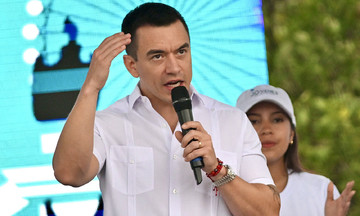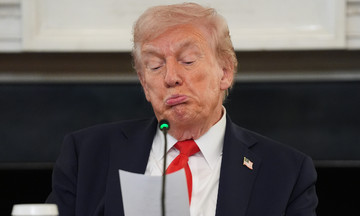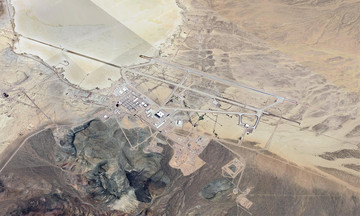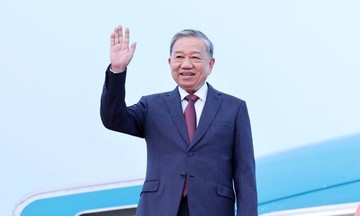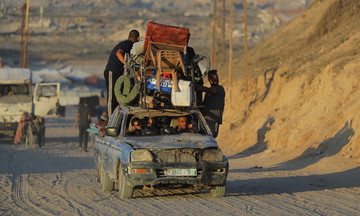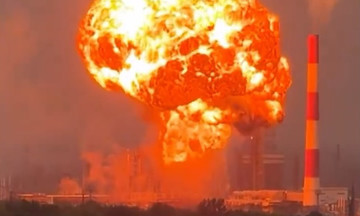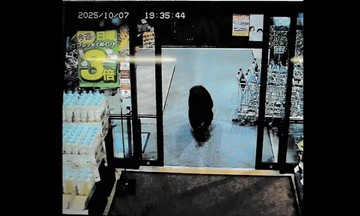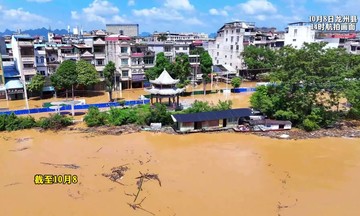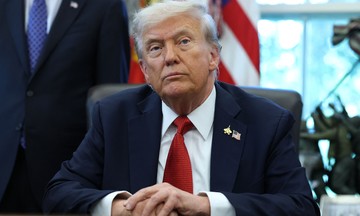On 9/9, a crowd of protesters, mostly young people from Generation Z, marched to the Kathmandu home of former Prime Minister Jhala Nath Khanal. One protester doused the curtains with gasoline, lit a match, and set the building ablaze.
While Khanal was away, his family was trapped inside. His son jumped from a balcony to escape, but his mother, science professor Ravi Laxmi Chitrakar, was stranded on the fourth floor amidst the smoke and flames.
Rescuers found Chitrakar with severe burns on her face and hands, her lungs and airways damaged by smoke inhalation. She was rushed to Kirtipur Hospital, Nepal's only specialized burn treatment center.
Amid the chaos, some news outlets reported Chitrakar's death. However, Khanal confirmed in an 11/9 interview with BBC News Nepali that she was still alive, though in critical condition and on a ventilator.
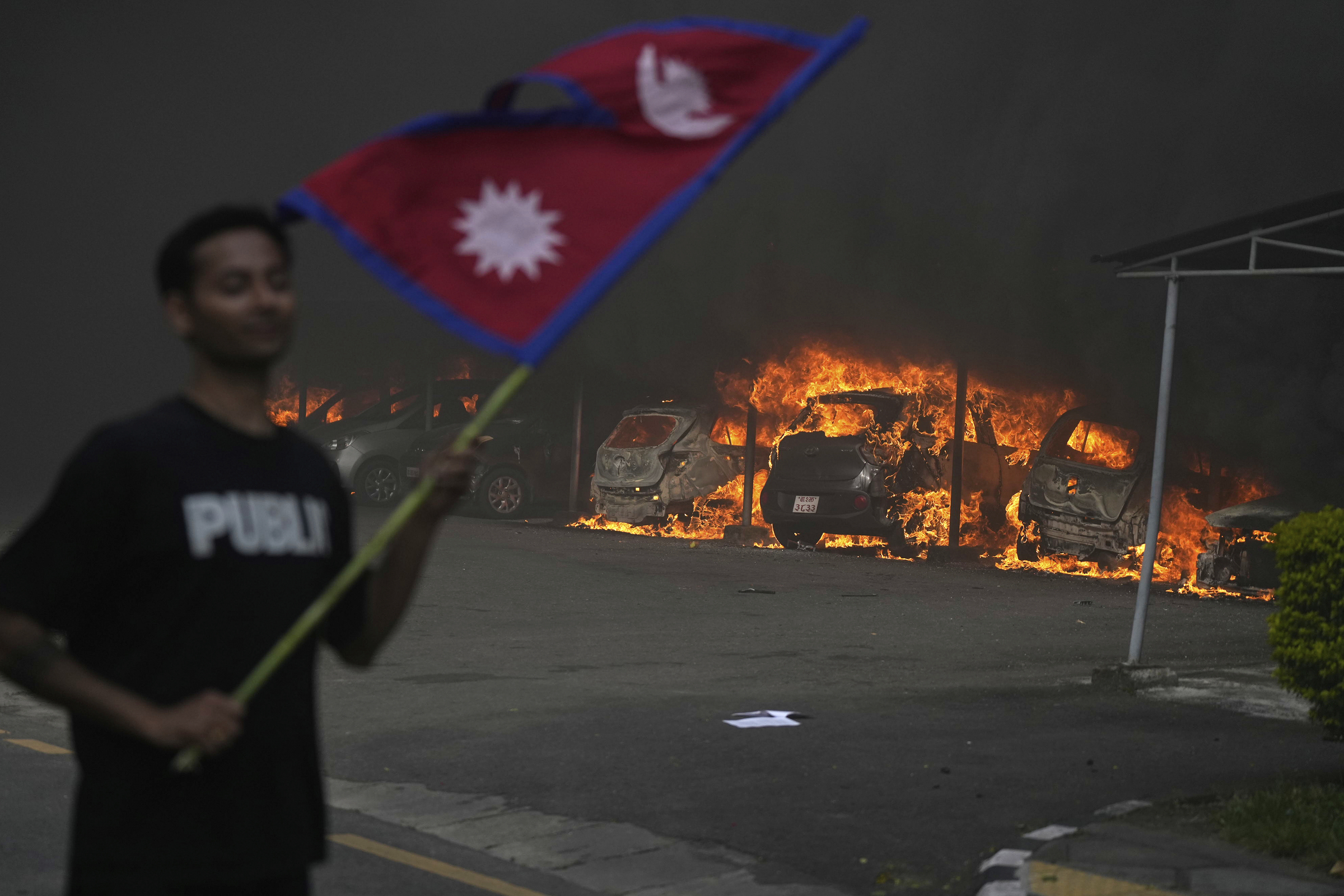 |
A protester holding a Nepali flag stands near burning vehicles in Kathmandu on 9/9. Photo: AP |
A protester holding a Nepali flag stands near burning vehicles in Kathmandu on 9/9. Photo: AP
The Ministry of Health reported on 14/9 that the week of violent Gen Z protests had left at least 72 dead and 2,113 injured. Ministry spokesperson Prakash Budathoki stated, "We have found bodies in shopping malls, homes, and buildings that were burned or attacked."
Initially sparked by a social media ban and concerns about corruption, the youth-led protests became the deadliest unrest in Nepal in decades. The demonstrations rapidly turned violent, with protesters setting fire to the Supreme Court, parliament, police stations, politicians' homes, and private businesses.
Ujjwal Bikram Thapa, an advocate for burn victims, contacted some protesters who expressed regret over the escalating violence. "I told them, 'you have burned this country down’," he said.
Some Gen Z groups leading the protests claimed they didn't intend for violence, alleging that "opportunists" hijacked their movement to loot and burn.
Chitrakar, 70, now faces months, possibly years, of arduous burn treatments and surgeries, while Khanal remains unable to see her.
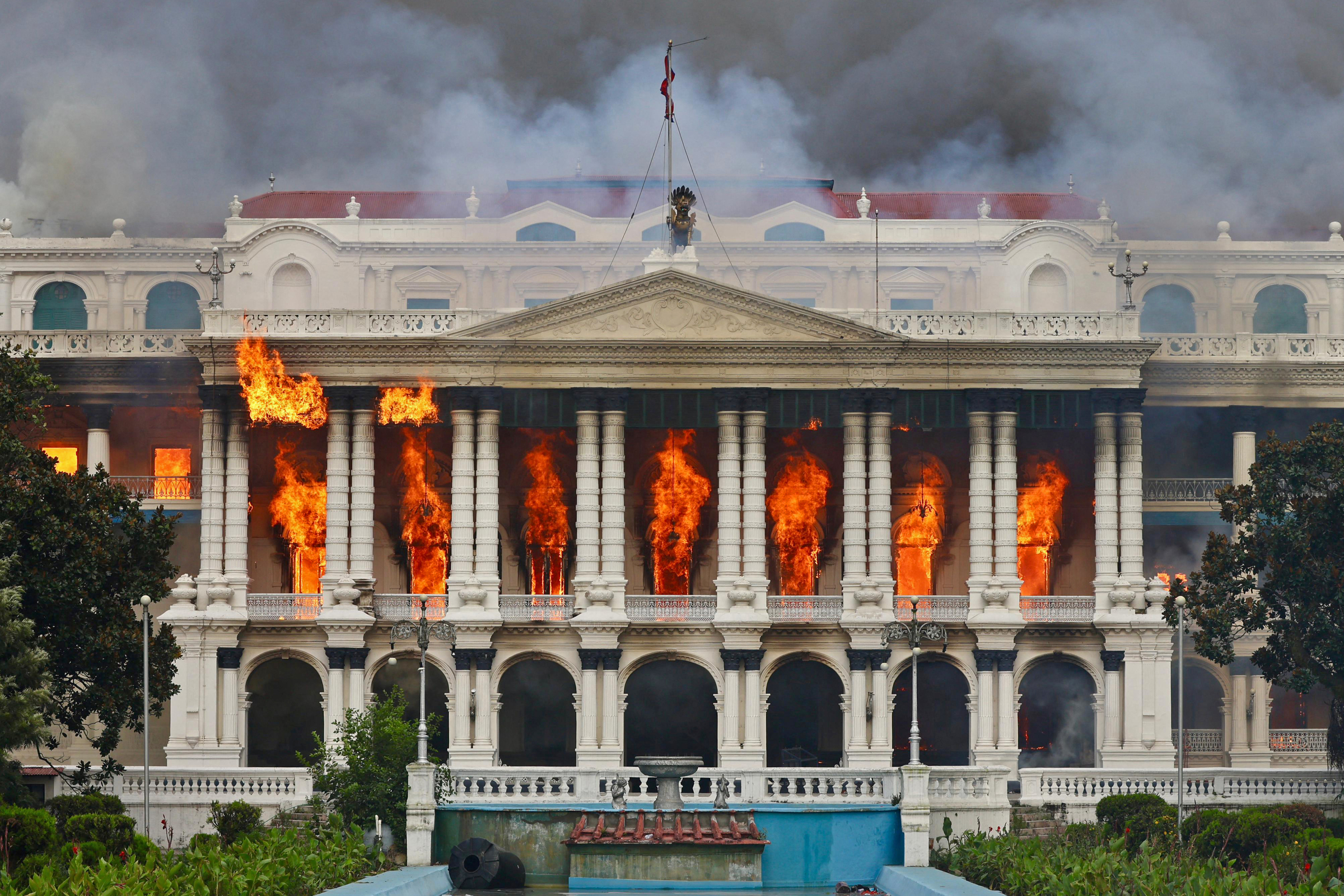 |
The Singha Durbar government building in Kathmandu burns on 9/9. Photo: AFP |
The Singha Durbar government building in Kathmandu burns on 9/9. Photo: AFP
Beyond those connected to Nepal's leadership, ordinary citizens also became victims of the arson. Birendra Kumar Sah and his cousin, Sibam Sah, ran a small photocopy shop next to a government building in Sirah, southern Nepal. They witnessed student protests on the morning of 9/9, which initially seemed peaceful but escalated by midday as thousands took to the streets.
As the crowd set fires, the cousins tried to save their shop, but a gas cylinder exploded inside, trapping them in flames. Both sustained burns and were hospitalized. Birendra Kumar Sah suffered severe burns to his face and body.
"I supported the protests, thinking they would change the system. But in the end, I am the one who has been changed," he said.
Sibam Sah lay beside his cousin in a simple hospital room, groaning as his mother applied burn ointment to his face. Their photocopy shop, like many businesses across Nepal, was destroyed.
Kirtipur Hospital had planned to open a new 70-bed burn unit this month, a two-year project funded by one of Kathmandu's wealthiest businessmen. However, the project and the $6 million donation are now uncertain after 27 of the businessman's supermarkets across Nepal were burned, possibly due to his perceived ties to the country's elite.
The arson also destroyed national archives, hindering basic healthcare services. Thapa lamented, "Everything has turned to ashes. The riots only lasted a short time, but we will be paying the price for many years."
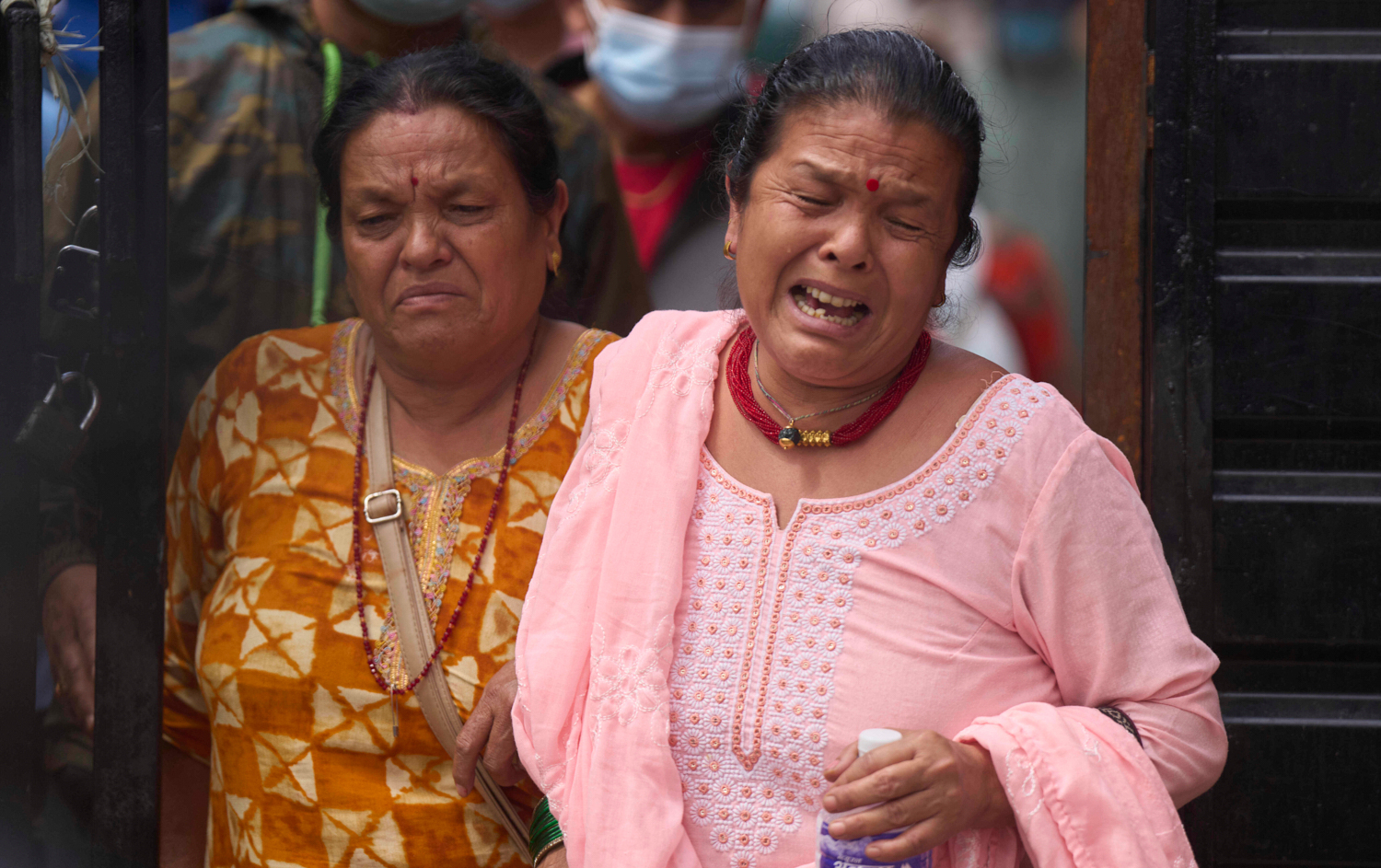 |
Relatives of a victim killed in the violent protests weep at the morgue in a Kathmandu hospital on 12/9. Photo: AP |
Relatives of a victim killed in the violent protests weep at the morgue in a Kathmandu hospital on 12/9. Photo: AP
Following the unrest, several Nepali leaders resigned. Former Chief Justice Sushila Karki, 73, was appointed interim prime minister, becoming the first woman to lead the Himalayan nation. She is tasked with organizing new parliamentary elections scheduled for 5/3 next year.
Karki's appointment resulted from urgent negotiations between President Ram Chandra Paudel and Army Chief Ashok Raj Sigdel, with participation from representatives of the Gen Z protest movement. Upon taking office on 14/9, Karki announced that the government would compensate each family of those killed in the riots with 1 million rupees (approximately 7,100 USD) and cover medical expenses for the injured.
Life is slowly returning to normal in Kathmandu. However, across Nepal, people are grappling with how their country reached this point and what lies ahead.
Pranaya Rana, a journalist covering the protests for Kalam Weekly, reflected, "Gen Z may have achieved their goal, but at a very steep price for the country."
Thanh Tam (Reuters, Washington Post, Khaleej Times)



